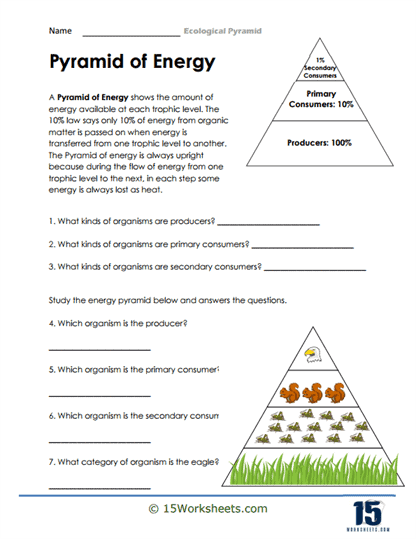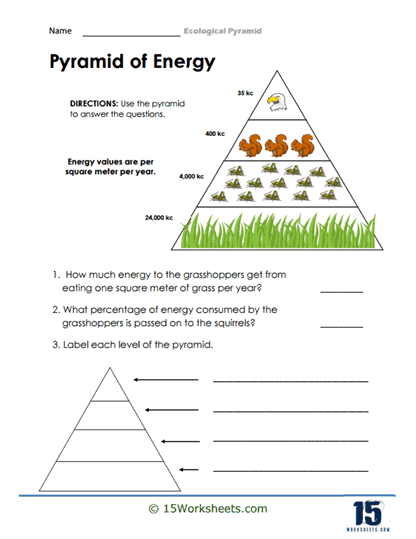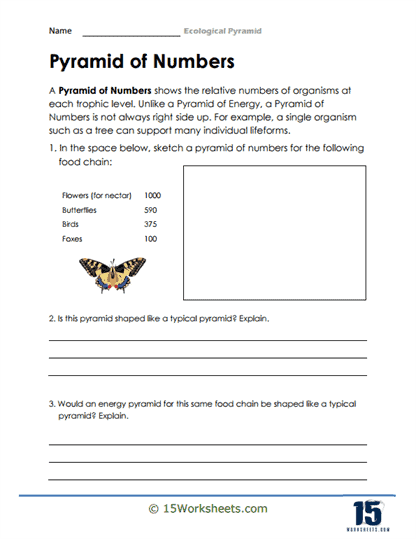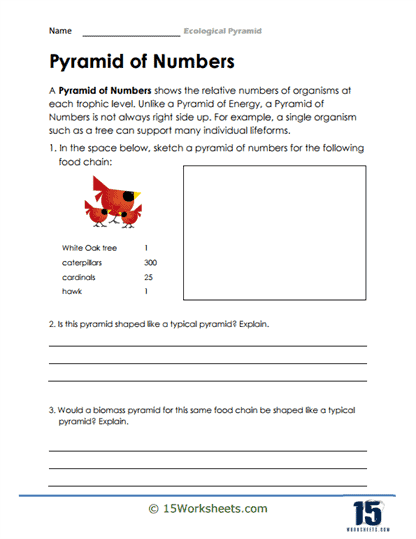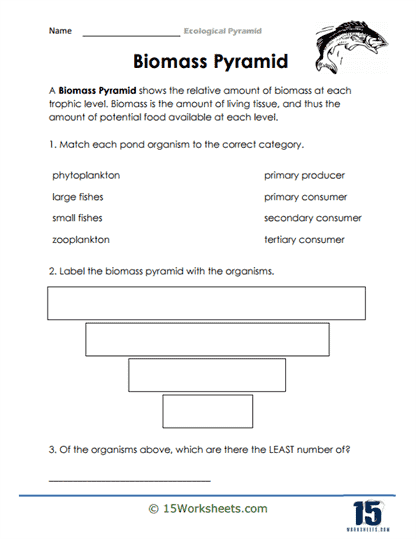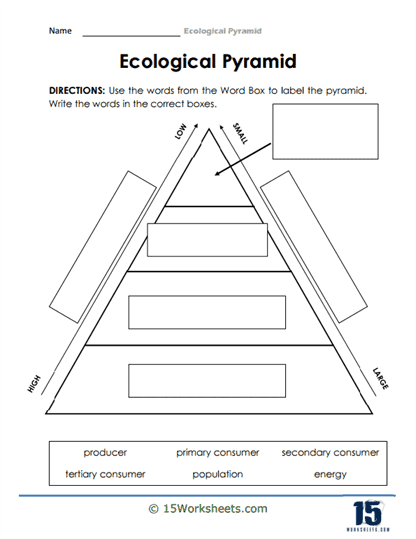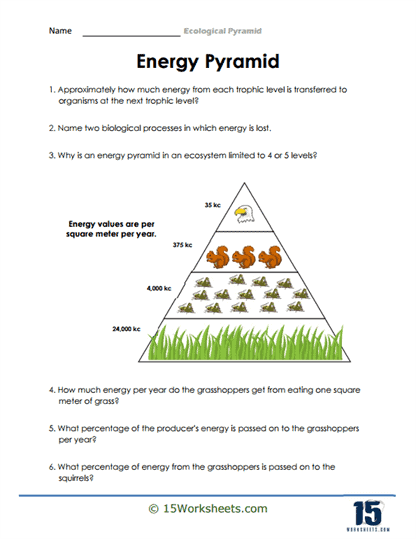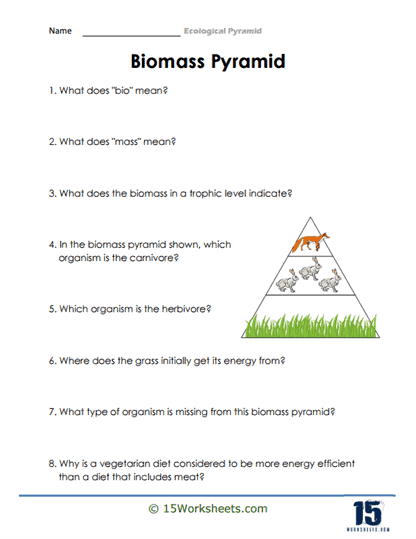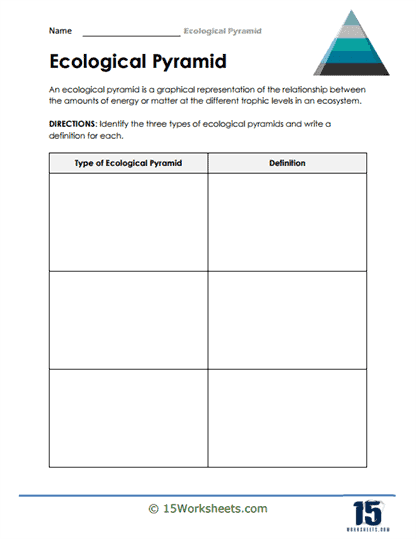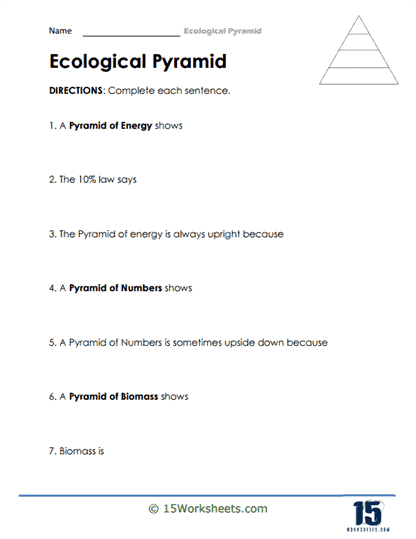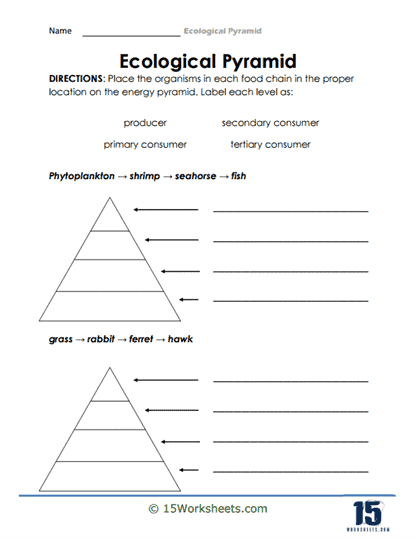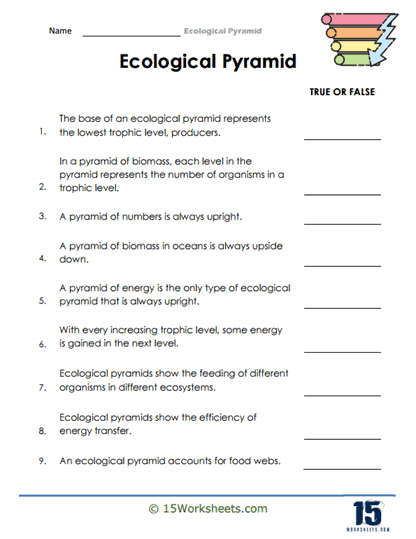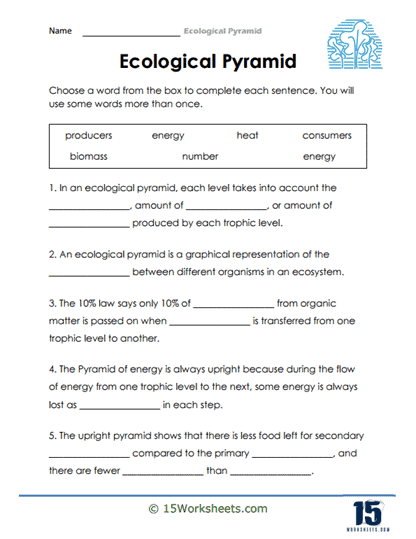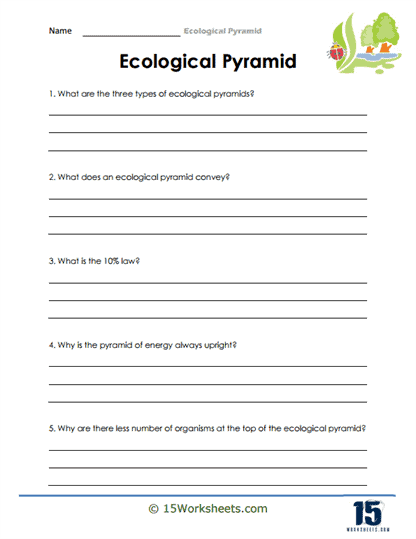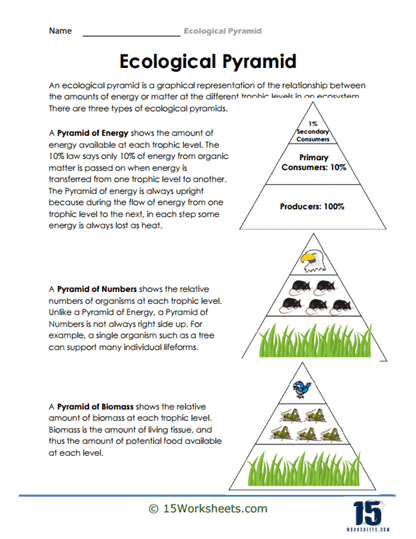Ecological Pyramid Worksheets
All About These 15 Worksheets
This collection of 15 worksheets is focused on helping students understand ecological pyramids and their different types. The worksheets cover a range of topics related to ecological pyramids, including the pyramid of energy, the pyramid of numbers, and the biomass pyramid.
Studying ecological pyramids provides students with a better understanding of the complex relationships that exist within ecosystems. Through these worksheets, students will learn about the different types of ecological pyramids: the pyramid of energy, pyramid of numbers, and biomass pyramid, and the information they provide about the trophic levels and population sizes within an ecosystem.
By developing an understanding of these concepts, students will be better equipped to analyze and evaluate the health of ecosystems and the impact that human activities can have on them. This knowledge can help students develop a deeper appreciation for the environment and an understanding of the importance of preserving ecological balance. Additionally, studying ecological pyramids can help students develop critical thinking and problem-solving skills as they analyze data, identify patterns, and make predictions.
Overall, this topic can benefit students by providing them with a foundation for understanding ecological systems and the importance of protecting the environment for future generations.
What is the Ecological Pyramid?
The ecological pyramid is a graphical representation of the relationships between different levels of organisms in an ecosystem. It is a way of visualizing the flow of energy and matter through an ecosystem, from the producers at the bottom of the pyramid to the consumers at the top.
The ecological pyramid is divided into three levels:
- The first level, or the base of the pyramid, represents the producers, such as plants and other photosynthetic organisms that convert sunlight into energy through photosynthesis.
- The second level represents the primary consumers, or herbivores, that consume the producers.
- The third level represents the secondary consumers, or carnivores, that consume the primary consumers.
In addition to these three levels, there can be higher levels of consumers, such as tertiary consumers, that eat the secondary consumers, and so on.
Each level of the ecological pyramid represents a trophic level, which refers to the position of an organism in a food chain. As you move up the pyramid, each level contains fewer organisms, and the energy and biomass transferred between levels decreases.
The ecological pyramid provides a visual representation of the structure and function of an ecosystem and can help scientists understand how energy and matter are transferred through different levels of the food chain.
Teaching About Ecological Pyramids
Teaching students about ecological pyramids is crucial for helping them comprehend the structure, function, and energy flow within ecosystems. Begin by introducing the concept of ecosystems, explaining how living organisms interact with one another and their environment, and stressing the importance of energy flow in influencing the ecosystem’s structure. Define ecological pyramids as graphical representations of ecosystem structure, which depict the distribution of energy, biomass, or numbers of organisms across various trophic levels.
Discuss the three main types of ecological pyramids, namely energy pyramids, biomass pyramids, and numbers pyramids, and explain their differences and provide examples. Teach students about trophic levels, which are hierarchical levels in an ecosystem based on organisms’ feeding relationships, and the roles of producers, primary consumers, secondary consumers, tertiary consumers, and decomposers in energy flow.
Introduce the 10% energy transfer rule, stating that only about 10% of the energy stored in one trophic level is transferred to the next level, and discuss reasons for energy loss, such as respiration, heat, and waste. Analyze real-world examples of ecosystems, like forests, grasslands, or oceans, to illustrate energy flow through ecological pyramids, and encourage students to create their own pyramids for these examples.
Engage students in interactive activities, such as building physical models of ecological pyramids, identifying trophic levels using food chains and food webs, or designing virtual ecosystems on digital platforms. Emphasize the relevance of ecological pyramids for understanding ecosystem health, human impacts, and conservation efforts, and discuss how imbalances in the pyramid can lead to ecosystem collapse or degradation.
Encourage critical thinking by asking students to consider the limitations of ecological pyramids and explore alternative ways to represent ecosystems. Have them think about how human activities, like agriculture, deforestation, and pollution, can impact ecosystem structure and function. Assess students’ understanding through quizzes, tests, or projects, and provide feedback to help them improve their knowledge and encourage further exploration of the topic. Combining explanation, real-world examples, hands-on activities, and critical thinking will enable students to gain a solid understanding of ecological pyramids and their significance in ecosystem studies.

